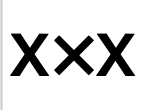HI Ken,
As Badunit has already said, and you have found with a closer look, Numbers replaced the division operator ( / ) with the division sign ( ÷ ).
Did you also notice in the formula that you show below, Numbers has replaced the multiplication operator ( * ) with the multiplication sign ( x )?
That x is not the letter x, as can be seen in a side by side comparison (I've used a screen shot and larger size as the differences are pretty subtle in Helvetica):

Two letters with the multiplication sign between.
Apple made this change a couple of years ago, And there was great confusion regarding the change to ÷, but not a whisper in these forums from people noticing the change from * to the multiplication sign. Eventually, posts regarding / and ÷ stopped coming in daily, weekly, or even monthly.
I was surprised this week to see two posts on the subject—yours, where it wasn't the main topic, and another, four days ago, where it was.
If instead I use C=MONTH(B) and D=DAY(B) and E=(C)x100+(D), I get e.g., 101 for January 1 and 601 for June 1. Notice here that I am using x instead of /, but the results give me a number that I can sort.
Nicely done. Works just as well as the similar formula suggested above.
Regards,
Barry